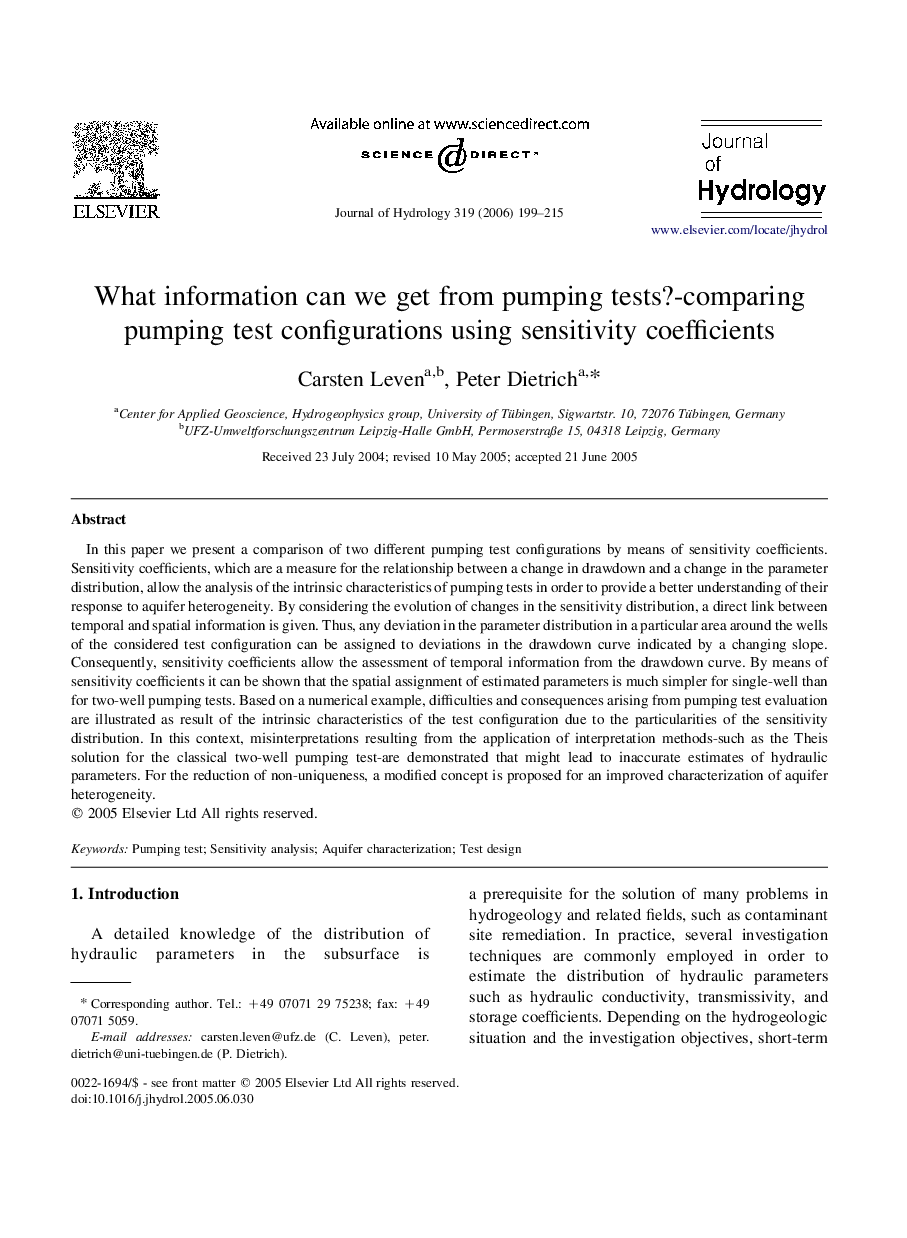| Article ID | Journal | Published Year | Pages | File Type |
|---|---|---|---|---|
| 4580824 | Journal of Hydrology | 2006 | 17 Pages |
In this paper we present a comparison of two different pumping test configurations by means of sensitivity coefficients. Sensitivity coefficients, which are a measure for the relationship between a change in drawdown and a change in the parameter distribution, allow the analysis of the intrinsic characteristics of pumping tests in order to provide a better understanding of their response to aquifer heterogeneity. By considering the evolution of changes in the sensitivity distribution, a direct link between temporal and spatial information is given. Thus, any deviation in the parameter distribution in a particular area around the wells of the considered test configuration can be assigned to deviations in the drawdown curve indicated by a changing slope. Consequently, sensitivity coefficients allow the assessment of temporal information from the drawdown curve. By means of sensitivity coefficients it can be shown that the spatial assignment of estimated parameters is much simpler for single-well than for two-well pumping tests. Based on a numerical example, difficulties and consequences arising from pumping test evaluation are illustrated as result of the intrinsic characteristics of the test configuration due to the particularities of the sensitivity distribution. In this context, misinterpretations resulting from the application of interpretation methods-such as the Theis solution for the classical two-well pumping test-are demonstrated that might lead to inaccurate estimates of hydraulic parameters. For the reduction of non-uniqueness, a modified concept is proposed for an improved characterization of aquifer heterogeneity.
